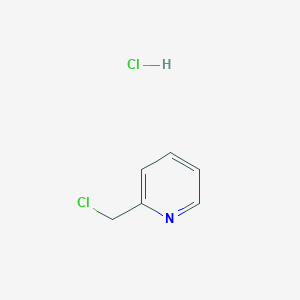India has witnessed many major and minor gas leak tragedies that gave tragic death to thousands of people & affected the future of many people physically, emotionally, and psychologically. We will learn about those gases that have killed & affected thousands in India.
- Worst industrial accident happened in December 1984 when Methyl Isocyanate was leaked from a pesticide plant named as Union Carbide India Limited (U.C.I.L) in Bhopal.
- In June 2014, Methane gas was leaked from a pipeline at the Bhilai plant of Steel Authority of India. That incident took the lives of 6 people and injured more than 50 people.
- In May 2017, more than 450 girl students were hospitalized due to leakage of toxic fumes of Chloro Methyl Pyridine at a container depot near two schools in South-East Delhi’s Tughlaqabad area.
- Recently another incident took place at RRV Puram near Gopalapatnam, about 15 km from Visakhapatnam on 7th May 2020 when Styrene gas was leaked from a styrene plant owned by a South Korean company named as LG.
GASES THAT HAVE KILLED & AFFECTED THOUSANDS IN INDIA
Generally referred as MIC, it is the smallest and the most toxic among the family of Isocyanates. It is flammable, corrosive, irritant, and acute toxic for human beings. Its molecular formula is CH3NCO. Its molecular weight is 57.051 g/mol.
Methyl Isocyanate
Chemical Formula & Structure

Physical and Chemical Properties
Following are the major physical & chemical properties of Methyl Isocyanate: –
- Colourless
- Low Boiling point (39o Celsius.)
- Denser than Water
- Heavier than Air
- Flash Point is less than 20%
- Sharp Odour
- Volatile
Flash Point is defined as the lowest temperature at which a liquid is converted into vapour and form an ignitable mixture in air near the surface of the liquid. Hence Methyl Isocyanate is capable to ignite the material due to its low flash point.”
Behaviour with Human Body
According to media reports, approximately 40 metric tonnes of MIC was leaked from the Union Carbide Pesticide plant. It is heavier than the air hence it was settled on the ground. It killed nearly 8000 people and affected more than 200000 people of Bhopal. This accident was considered as the worst industrial disaster in the history of the world.
The major cause of death from MIC in 1984 was pulmonary edema commonly called as Lung Edema. It is a situation of excessive extra-vascular water in the lungs. This water is accumulated within pulmonary parenchyma or alveoli.
Pulmonary edema means fluids are building up in the body and when the concentration of fluid increased a level; oxygen from the air cannot enter into the blood from the lungs hence due to an acute shortage of oxygen in the body; a person can die.
Methyl Isocyanate leaked at midnight and its concentration became massive after some time. People were sleeping and unknowingly they inhaled much volume of this gas. This caused tearing in eyes, problems in breathing, and ultimately death.
There were reports that pregnant women lost their foetus due to exposure to this gas. Irritation and rashes in the skin, sudden blindness were other major health hazards that happened due to this gas.
Generally referred as Marsh Gas or methyl hydride, It is the simplest member of the paraffin series of hydrocarbons. This is the most potent greenhouse gas also. Its molecular formula is CH4 and molecular weight is 16.04 g/mol. It is the principal content of the fuels.
Methane
Chemical Formula & Structure

Physical and Chemical Properties
Following are the major physical & chemical properties of Methane: –
- Colourless
- Odourless
- Lighter than air
- Slightly Soluble in Water
- It is explosive if a mixture of methane and air have methane content between 5-14 percent by volume
- Flammable
Behaviour with Human Body
Relatively methane is non-toxic for human beings. It is dangerous if consumed in large volumes only. A high level of methane in the human body can cause mood change, problems in the vision, vomiting, headache, memory loss, nausea etc.
A high level of methane can also reduce the oxygen level in the human body which can lead to asphyxia also. There can be a change in the heart-rate, numbness, and unconsciousness and if volume is in excess, it may lead to death also.
Generally referred as 2-(Chloromethyl) pyridine; hydrochloride & 2-Picolyl chloride hydrochloride, it is a hydrochloride obtained by combining 2-(Chloromethyl) pyridine with 1 molar equivalent of hydrochloric acid. Its molecular formula is C6H7Cl2N. Its molecular weight is 164.03 g/mol.
Chloro Methyl Pyridine
Chemical Formula & Structure

Physical and Chemical Properties
Following are the major physical & chemical properties of Chloro Methyl Pyridine
- Corrosive
- Irritant
- Soluble in water
- Yellow-green to light brown
- Emits toxic fumes when heated to decomposition
- Off white chunky solid
Behaviour with Human Body
This is an eye & respiratory irritant compound. Its exposure may cause severe irritation to the skin also. In New Delhi, its toxic fumes are leaked from a container depot near the schools. Direct exposure may cause coughing, wheezing, shortness of breath, and vomiting also.
There was no death reported due to this incident but it severely affected nearly 450 girl students with abdominal pain, irritation in the eyes, and shortness of breath.
Generally called as Ethyl Benzene or Vinyl Benzene; Styrene is an organic compound. Its molecular formula is C6H5CH=CH2 or simply C8H8. Its molecular weight is 104.15 g/mol. This is considered as a raw material for the synthesis of poly-styrene.
Styrene
Chemical Formula and Structure

Physical and Chemical Properties
Following are the major physical & chemical properties of Styrene: –
- Colourless in liquid form at room temperature
- Penetrating Odour
- Give off toxic fumes in a fire
- Flash Point is 32o Celsius
- Acute corrosive to metals
- Acute toxic (Inhalation)
- Flammable
Behaviour with Human Body
This incident looks like a repetition of the Bhopal Gas tragedy because styrene was also leaked in the later hours of the night when people were sleeping at their homes. Styrene or any other organic compound of Benzene is less harmful to the human body.
According to medical experts, styrene can be harmful if its effect can last for many hours. It is also contagious for those people suffering from acute bronchitis, respiratory disorders or any form of cardiac disease. It is a suspicious carcinogenic also.
When exposure of styrene lasts for a longer time, it can cause pulmonary edema in the human body which can ultimately become the major cause of death. Tearing in eyes, sore throat and cough, difficulty in breathing, vomiting, and giddiness are other major effects on the human body.
After metabolic activities, Styrene can be flushed out from the human body hence any future consequence on the human body due to exposure of Styrene is unknown but under research; hence nothing can be said at an initial level.
Management of chemicals is essential for the safety of ordinary people who are unaware of dealing with havoc situations of leakage. Industrial disasters can be lethal hence every government must ensure strict safety procedures to avoid such incidents.








